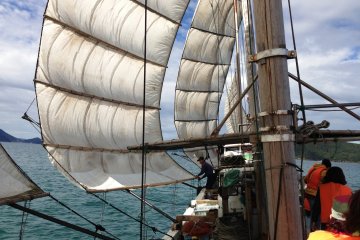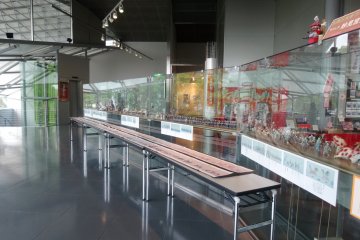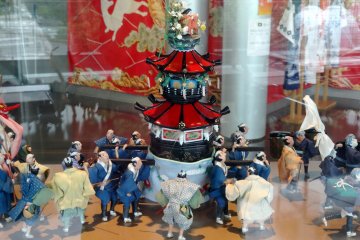Yatsushiro city's most impressive building was most likely once its feudal fortress, but architecture buffs today flock to the small metropolis in southern Kumamoto Prefecture to view the Yatsushiro Municipal Museum. The building, perched on a small (manmade) hill just west of the old castle ruins, was designed by famed Japanese architect Toyo Ito.
While Ito has designed such well-known structures as the World Games Stadium in Kaohsiung, Taiwan, and several high-end retail buildings in Tokyo, he brought equal talent and passion to the humble Municipal Museum in Yatsushiro. The building itself has two main components - glass walls that ring the entire museum and open it up to the natural light, and a darker yet airy roof canopy that resembles billowing sails. The museum is actually entered via a long ramp that winds up the hill to the second floor. Despite its incredibly futuristic appearance, the building seems to blend rather seamlessly with its historic "neighbor", the Shohinken teahouse garden just across the street.
Unlike the exterior, the main exhibit of the museum is a bit of a disappointment. The bottom floor is devoted to archeological finds from around Yatsushiro, though hardly anything is signed in English. The most worthwhile site on this level is the excellent wooden model of the former castle town. Upstairs in the lobby, I found myself much more interested by the colorful diorama of the city's Myoken Matsuri. The 380-year-old festival is considered one of Kyushu's top 3 festivals and features a giant procession of floats and mikoshi (portable shrines). The highlight of the festival is the giant turtle and snake-shaped float, a character called kida around whom the entire event (and its associated legends) are centered. You can watch video of the festival in the reception hall and get a good idea of the actual procession from the very detailed miniatures in the diorama.
It may not be worth stopping in for just the permanent collection, but do check out the special exhibit schedule. From now until early June, the museum is featuring an exhibit on the Nagasaki Kunchi harvest festival, complete with beautifully-embroidered garments and unique cloth coverings used in the celebration.









